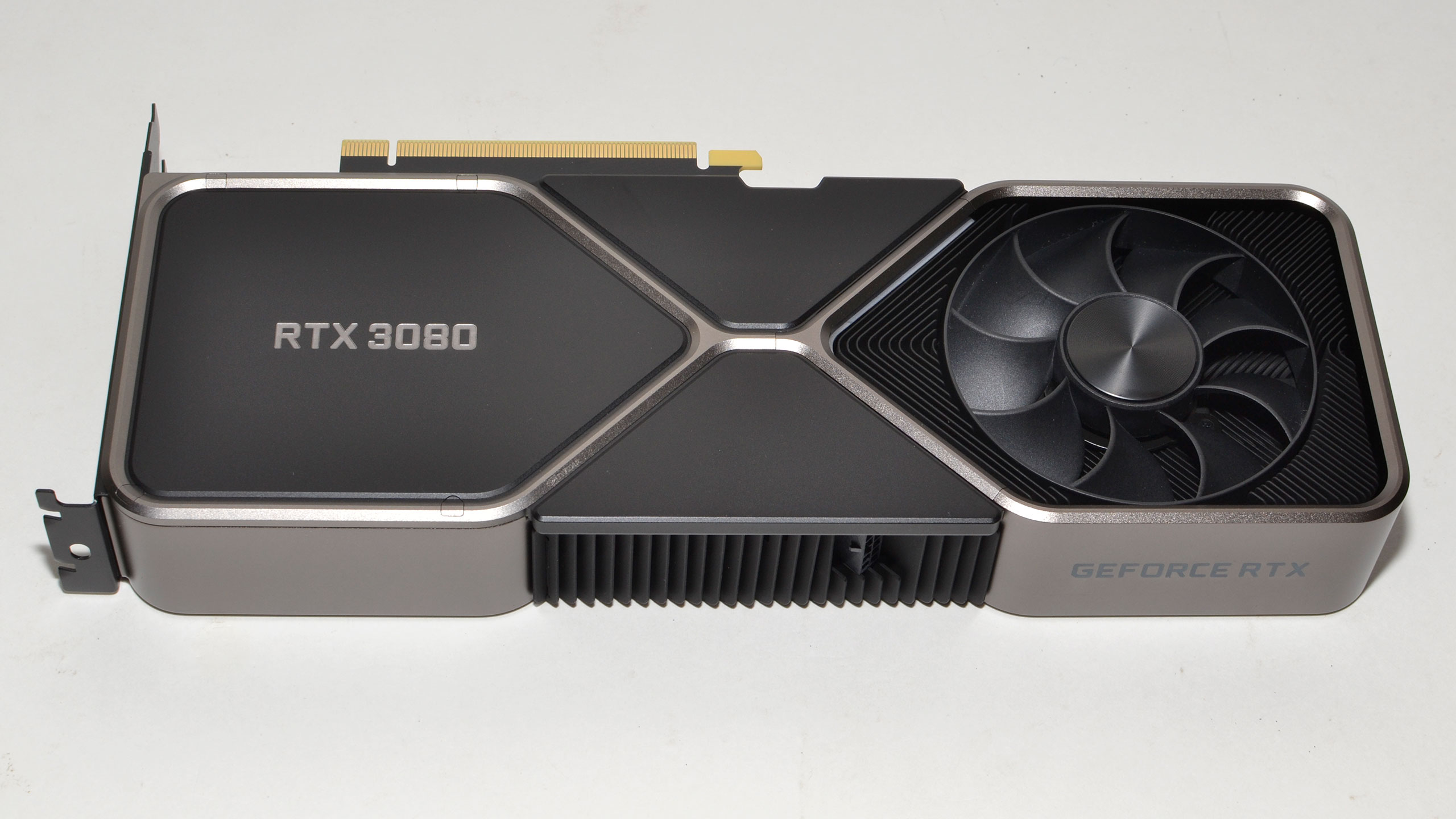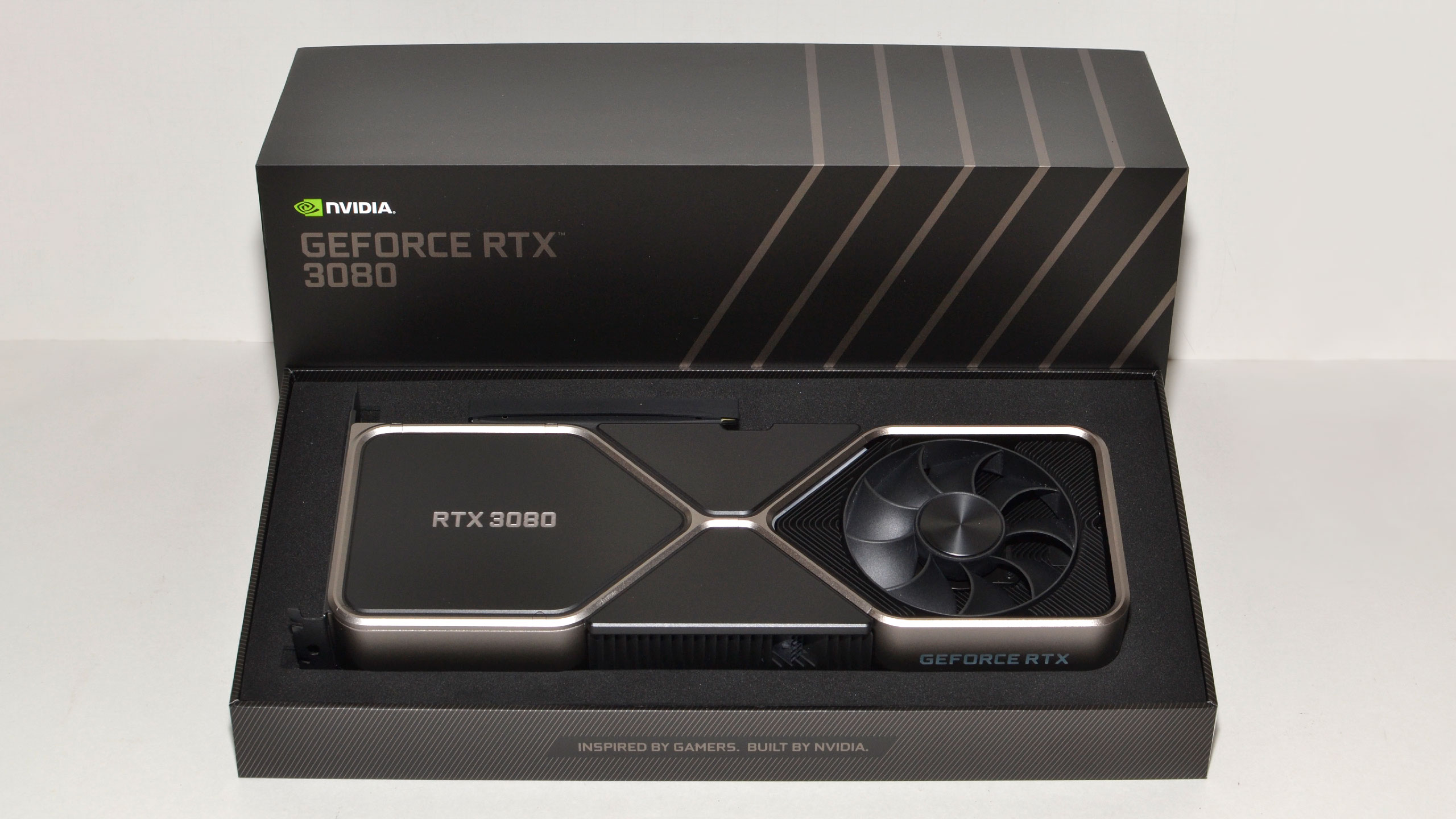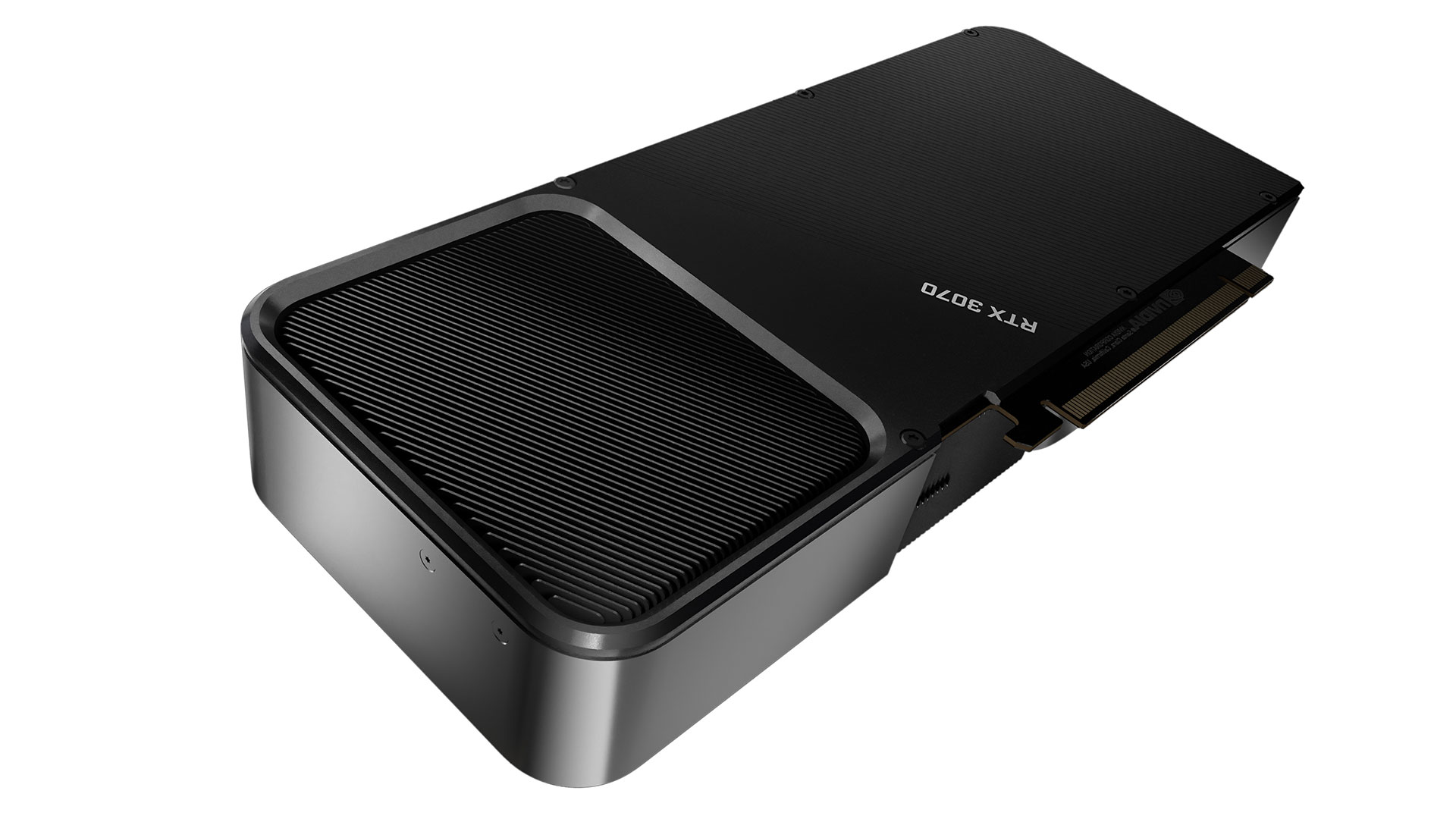Why you can trust Tom's Hardware
Nvidia's last major launch was two years ago with the Turing architecture and RTX 20-series GPUs. Since then, Nvidia has released a slew of high-end, midrange, and budget offerings, plus the Super product refreshes, all built on TSMC's 12nm FinFET lithography. Meanwhile, AMD came out with its first 7nm GPUs in early 2019 with the Radeon VII and followed up with the Navi 1x RX 5700 series GPUs last July. One year later, Nvidia is finally ready to move beyond Turing and 12nm. It's about time.
Since the RTX 2080 Ti debuted in September 2018, the top of the GPU hierarchy has been static. Sure, there was the seemingly inevitable and laughably-priced Titan RTX a few months later, but at double the price of the 2080 Ti for a few percent more performance, that was purely for bragging rights — or professional users that actually needed the 24GB of memory, perhaps. Now the RTX 3080 knocks everything else off the mountain and plans to reign as the king for a while.
Except, of course, the GeForce RTX 3090 launches next week. But is that the king, or more like the emperor of GPUs? And do you really need it? Unless you were already in the market for a Titan RTX or thinking the RTX 2080 Ti was a reasonable option, probably not. On paper, the RTX 3090 is only 20% faster than the 3080, which means it will likely be more like 10-15% faster in practice — assuming you don't run into CPU bottlenecks. It does have more than twice as much memory, but as noted above, even that's more than a bit overkill.
The GeForce RTX 3080 is here, right now, and priced pretty reasonably considering the performance it offers. Last month, you could have spent $2,500 on dual RTX 2080 Ti cards hooked up via NVLink, only to find that multi-GPU support in games is largely dead, particularly in new releases. Now, for $700, you get 30% better performance than the outgoing RTX 2080 Ti and pocket $500 in savings. That's assuming you can find an RTX 3080 in stock.
Let's also be clear that the RTX 3080 is primarily for high-resolution gaming. Yes, you can run 1440p with RTX effects, and it will be a good fit. It's a better fit for 4K gaming. Don't bother with it if you're using a 1080p display, as you could get nearly the same level of performance with a lesser GPU. Which brings us to the next option: Wait for the RTX 3070 or RX 6800 XT (whatever AMD's $400-$500 option ends up being called).
The RTX 3070 should still be plenty fast for 1440p gaming, and more than fast enough for 1080p — just like the RTX 2080 Ti. Nvidia says it will perform "better than the 2080 Ti," though we take that marketing-speak with a scoop of salt. Out of all the benchmarks we ran, there was only one (Doom Eternal) where the 3080 actually doubled the 2080's performance.
Anyway, saving $200 and buying a 3070 could make a lot of sense. It's interesting to note that the RTX 3070 is a substantial step down from the RTX 3080, however. The 3080 has 48% more GPU, RT, and Tensor cores, it has 20% more memory, and the memory is clocked 36% higher. That's a big enough gap that we could see an RTX 3070 Ti down the road, but at what price? Alternatively, wait and see what AMD's Navi 2x / RX 6000 GPUs can do, which we'll hear about more on October 28.
Get Tom's Hardware's best news and in-depth reviews, straight to your inbox.
The bottom line is that the RTX 3080 is the new high-end gaming champion, delivering truly next-gen performance without a massive increase in price. If you've been sitting on a GTX 1080 Ti or lower, waiting for a good time to upgrade, that time has arrived. The only remaining question is just how competitive AMD's RX 6000, aka Big Navi, will be. Even with 80 CUs, on paper, it looks like Nvidia's RTX 3080 may trump the top Navi 2x cards, thanks to GDDR6X and the doubling down on FP32 capability. AMD might offer 16GB of memory, but it's probably going to be paired with a 256-bit bus and clocked quite a bit lower than 19 Gbps, which may limit performance.
If you're still happy with your current graphics card, of course, there's no need to upgrade. But right now, we're staring at Cyberpunk 2077, Watch Dogs: Legion, and the next generation consoles with ray tracing support. I, for one, know I want to run those games with all the bells and whistles enabled — at least for a little while, before deciding if my GPU can cope. Certainly some time between now and December, I'm going to need a new GPU. Plus, November is my birthday month, but with time we'll hopefully have benchmarks of RX 6900 XT. One of those is destined to end up in my gaming PC.
Current page: GeForce RTX 3080: The New King of the Graphics Card Hill
Prev Page GeForce RTX 3080: Power, Temperatures, and Fan Speeds
Jarred Walton is a senior editor at Tom's Hardware focusing on everything GPU. He has been working as a tech journalist since 2004, writing for AnandTech, Maximum PC, and PC Gamer. From the first S3 Virge '3D decelerators' to today's GPUs, Jarred keeps up with all the latest graphics trends and is the one to ask about game performance.
-
chickenballs I thought the 3080 was released in September.Reply
Maybe it's considered a "paper-launch"
Nvidia won't like that :Dchalabam said:This article lacks a tensorflow benchmark -
JarredWaltonGPU Reply
FYI, it's the same review that we posted at the launch, just reformatted and paginated now. If I wasn't on break for the holidays, I'd maybe do a bunch of new charts, but I've got other things I'll be doing in that area soon enough.Zeecoder said:This article is outdated. -
MagicPants I still think the shortage is the big news for the 3080.Reply
I might be paranoid, but I think there be something to the fact that the top ebay 3080 scalper "occomputerparts" has sold 97 RTX 3080s from EVGA specifically and shipped them from Brea, California.
Anyone want to guess where EVGA is headquartered??? Brea, California.
Now it could be that some scalper wrote a bot and has been buying them off Amazon, BestBuy, and Newegg. But then why only sell EVGA cards? They'd have to program their bot to ignore cards from other vendors, which wouldn't make any sense. -
TEAMSWITCHER ReplyMagicPants said:I still think the shortage is the big news for the 3080.
I might be paranoid, but I think there be something to the fact that the top ebay 3080 scalper "occomputerparts" has sold 97 RTX 3080s from EVGA specifically and shipped them from Brea, California.
Anyone want to guess where EVGA is headquartered??? Brea, California.
Now it could be that some scalper wrote a bot and has been buying them off Amazon, BestBuy, and Newegg. But then why only sell EVGA cards? They'd have to program their bot to ignore cards from other vendors, which wouldn't make any sense.
It's probably an inside job. Demand for RTX 3000 series is off the charts! I don't see any good reason to buy an AMD GPU other than for a pity-purchase. AMD is pricing their cards less, because they are less. In sheer performance it's just a bit less, but in next generation capabilities .. it's a lot less. I will hold out for an RTX 3080. AMD won't catch up, before Nvidia has filled the demand of the market. Patience will be rewarded. -
LeszekSol What is a point discussing items (namely - Nvidia RTX3080 Founders Edition) which dos not exist in free market? Cards are anavailable since first day of "hiting market" and even Nvidia has no idea (or perhaps plans) when it will become available again. There are other cards based on similar architecture - but actually a little different - so.... WHAT FOR guys you are loosing time to discuss this? Lets forget about NVidia, or let's put it on the shelf with MobyDick books.....Reply -
PureMist Hello,Reply
I have a question about the settings used in the testing for FFXIV. The chart says Medium or Ultra but the game itself only has Maximum and two PC and Laptop settings. So how do these correlate to the actual in game settings? Or are “Medium” and “Ultra” two custom presets you made for testing purposes?
Thank you for your time. -
JarredWaltonGPU Reply
Sorry, my chart generation script defaults to "medium" and "ultra" and I didn't think about this particular game. You're right, the actual settings are different in FFXIV Benchmark. I use the "high" and "maximum" settings instead of medium/ultra for that test. I'll see about updating the script to put in the correct names, though I intend to drop the FFXIV benchmark at some point regardless.PureMist said:Hello,
I have a question about the settings used in the testing for FFXIV. The chart says Medium or Ultra but the game itself only has Maximum and two PC and Laptop settings. So how do these correlate to the actual in game settings? Or are “Medium” and “Ultra” two custom presets you made for testing purposes?
Thank you for your time. -
acsmith1972 The cheapest I see this card for right now is $1800. I really wish these manufacturers wouldn't be pricing these cards based on bitcoin mining. It's once again going to price the rest of us out of getting any decent video cards till BTC drops again.Reply


